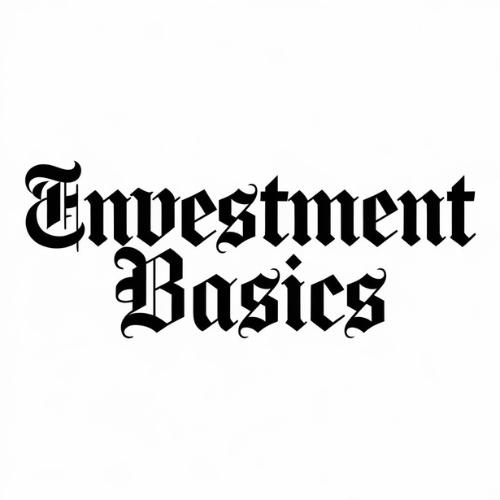Why the surest way to long-term investing success is simply buying these two funds. Plus, the best asset allocation ETFs
Worried about a hawkish Fed, over-valued stocks, teetering debt piles, volatile currencies, cliffhanger elections or rancorous geopolitics? Relax and don’t over-think it.
For those with long-term savings horizons, the temptation to overtrade and overpay fees for sophisticated investment management, esoteric financial products and expensive hedging may just not be worth it.
Despite a never-ending debate about the merits of active or passive investing and the perennial search for index-beating “alpha,” the surest, cheapest and least taxing strategy over the long term may be a simple combination of two diversified passive funds.
One should track top global stocks and the other equivalent corporate bonds, both hedged to domestic currency.
Then just go fishing.
So reckons JPMorgan’s long-term investment strategists Jan Loeys and Alexander Wise, who dub their favoured approach KISS, or “Keep it Simple, Stupid,” after the long-standing design principle on avoiding complexity where possible.
“Our main contention is not that KISS investing is absolutely optimal and doing anything else is irrational or a bad investment,” Loeys and Wise told clients this week.
“Our point is instead that we believe you can achieve most, if not all of your financial objectives by following our KISS approach,” they said. “Adding more products or complexity in our mind produces steadily falling extra benefits.”
The JPMorgan team acknowledges that short-term trading and market timing by hedge funds or other active players are critical to market efficiency and liquidity and can make big killings. But by so quickly arbitraging away market pricing anomalies before most investors can even spot them, there’s not much juice left for much of the market.
“The lifetime of any new ‘alpha’ ideas has gotten shorter and shorter,” they said.
But their main rationale for longer-term savers to keep it simple riffs largely off the fact that any outperformance just doesn’t seem to compensate much for the fund manager selection risks, higher fees, transaction taxes and the sheer time spent monitoring more complex or esoteric portfolios.
What’s more, they reckon the fewer the assets one has in a portfolio, the easier it is to judge risk on them.
By way of example, Loeys and Wise examine 24 years of monthly hedge fund returns in excess of what that simple global equity/bond portfolio would have delivered, with weights to give the same return volatility on a rolling basis.
These have a patchy record over the past 10 years and rarely topped 10 per cent over the past two decades, even though they have been positive post-pandemic. These are mostly complex strategies and often lack transparency, have high fees and significant manager risk.
According to HFR hedge fund research, the HFRI Fund Weighted Composite Index has underperformed S&P 500 total returns in all but one of the last 10 years.
Other arguments include how longer-term “value” investors can struggle for years to beat the market, how “undervalued” stocks get whipped away quickly and how many index-leading stocks can remain overvalued for long periods.
Just ask Warren Buffett.
Despite a stellar 60-year sojourn for his Berkshire Hathaway vehicle’s strategy of picking unfashionable and undervalued stocks, he can’t find many left these days.
Speaking at Berkshire’s annual meeting last weekend, Buffett said he expected the conglomerate’s cash pile, now a record US$189 billion, to keep growing. That’s more than half the size of the firm’s US$335 billion equity portfolio.
Acknowledging the pain for stock-picking funds trying to beat passive indexes now dominated by Big Tech megacaps, Boston-based value investor GMO earlier this year showed how almost three quarters of large cap “blend managers” underperformed the S&P 500 last year and 90 per cent of them lagged over the decade.
With total returns on MSCI’s all-country world index topping 400 per cent for the past 20 years – a middle ground between the 600 per cent for the S&P 500 and 200 per cent for the euro zone STOXX index – the passive equity ride’s been pretty impressive even when you throw in seismic 2008 and 2020 drawdowns.
— Mike Dolan, Reuters
This is the Globe Investor newsletter, published three times each week. If someone has forwarded this e-mail newsletter to you or you’re reading this on the web, you can sign up for the newsletter and others on our newsletter signup page.
The Rundown
The 2024 Globe and Mail ETF Buyers Guide, Part Six: Asset allocation ETFs
Asset allocation ETFs are investing’s great problem-solver. Decide whether you want a conservative, balanced, growth or all-equity focus, and then choose a fund. This guide from Rob Carrick can help you review choices in the balanced and growth sub-categories – they’re the most popular and widely suitable.
You’ve heard of dollar-cost averaging. How about trying dollar-cost selling?
Dollar-cost averaging is when you buy an investment and periodically add to it over time. You can set scheduled and predefined periods, such as monthly, when you buy more shares or units of the investment no matter the price or price trend. This way, you are not concerned about trying to “time” the market to get a lower price. RBC adviser Nancy Woods thinks the same concept can be applied to selling.
Earnings bolster U.S. stocks but crucial inflation report looms
A strong earnings season and blockbuster reports from tech industry titans fueled a U.S. stock market rebound from the first real swoon of 2024. Next week’s inflation data could determine whether the good vibes continue, reports Lewis Krauskopf of Reuters.
U.S. dollar’s stubborn strength dents companies’ earnings cheer
Reuters reports on how a host of U.S. companies are faced with a problem they had not expected to confront this year: a rising dollar.
Others (for subscribers)
Analysts’ forecast returns, recommendations and yields for all stocks in the TSX
The highest-yielding stocks on the TSX, plus risk data
These are the stocks that had the biggest influence on the TSX Composite over the past three months
Number Cruncher: Eight manufacturers of chips used in AI with sustainable dividends
Markets and economists react: BoC June rate cut bets slashed after unexpectedly strong jobs data
Monica Rizk: Bullish on Emerson Electric
Ted Dixon: Advantage Energy director buys as stock rallies
Friday’s analyst upgrades and downgrades
Thursday’s analyst upgrades and downgrades
Globe Advisor
How this equity investment specialist is playing the ‘picks and shovels’ of the AI boom
Are you a financial advisor? Register for Globe Advisor (www.globeadvisor.com) for free daily and weekly newsletters, in-depth industry coverage and analysis.
What’s up in the days ahead
John Heinzl will tell us why the skid in Tesla’s stock may be far from over.
Go your own way: World market themes for the week ahead
Click here to see the Globe Investor earnings and economic news calendar.
More Globe Investor coverage
For more Globe Investor stories, follow us on Twitter @globeinvestor
Compiled by Globe Investor Staff
link





